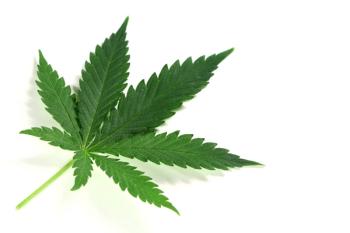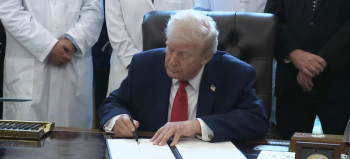
- October 2022
- Volume 3
- Issue 3
- Pages: 8-10
Overview of the Research on Cannabis for Pediatric Oncology
Cannabis provides a conundrum for treating pediatric oncology: While preclinical research provides clear mechanisms of action for cannabis’s potential to treat pediatric oncology, clinical studies are difficult to conduct, due to the associated ethics. Here, we take a closer look at the state of current research.
About Pediatric Oncology
Cancer is one of the leading causes of death in children. While leukemia is the most common form of pediatric cancer, tumors of the central nervous system (CNS) are the leading causes of death in children with cancer (1).
Cancer in children is rare (1). Unfortunately, its incidence has increased during the past 40 years, from about 13 cases per 100,000 children in 1975, to about 20 cases per 100,000 children in 2016 (2). Fortunately, however, the survival rate has dramatically improved, from about 10% during the 1970s to now upwards of 90% (2).
Pediatric oncology is different from adult oncology. The most notable difference is the frequencies in which different types of cancer occur in adults versus children. Specifically, forms of cancer more common in adults include cancers of the lung, colon, pancreas, and breast. In contrast, cancer in children is overwhelmingly in the form of either leukemia or CNS tumors (1).
Another important difference between adult and pediatric cancers is their respective causes. Much adult cancer is associated with “cumulative environmental exposures.” In contrast, children haven’t accumulated such exposures, so their cancers tend to result more from genetic mutations or other forms of abnormal development. As a result, tumors from adults and children with similar tissue formations often have very different origins, and thus must be treated differently (1). Finally, children respond differently than adults to cancer treatments, such as chemotherapy (1).
In short, children tend to suffer from different forms of cancer than adults do, the causes of pediatric cancers are different from the causes of adult forms of cancer, and children respond differently to treatments. It follows that research and treatments that apply to adult cancers don’t necessarily apply to pediatric cancers; rather, pediatric cancer must be studied separately. Unfortunately, the small numbers of patients, combined with the ethics associated with conducting research on children, makes it exceedingly difficult to study pediatric oncology.
Studies of Cannabis for Pediatric Oncology
Given the rarity of pediatric oncology, together with the ethics surrounding its study, it’s no surprise that there are few studies in cannabis as a treatment for pediatric oncology, and those that do exist suffer from reliability or validity problems due to their small associated sample sizes. That said, let’s consider what preclinical and clinical studies have discovered about cannabis as a treatment for pediatric oncology patients.
Preclinical Studies
Preclinical research on cannabis for pediatric oncology has established, first, that tumors with more cannabinoid receptors (CB1) at the time of diagnosis tended to shrink either on their own or in response to cannabis treatments. This suggests the endocannabinoid system is involved, and thus, that cannabis may act on tumors. Second, cannabinoids induce death in leukemia cells both in vitro and in vivo, and cannabis enhances the efficacy of leukemia chemotherapies. Third, tetrahydrocannabinol (THC) from both natural and synthetic sources has been shown to inhibit tumor growth. And last, THC and cannabidiol (CBD) have been shown to reduce cell viability, both in vitro and in vivo, in pediatric neuroblastoma (1,3).
Clinical Studies
Clinical research on cannabis for pediatric oncology has established, first, that cannabis may be more effective than either placebo or conventional therapies in treating nausea and vomiting (1,3). Second, the experience of a pediatric oncology center in Israel using cannabis to treat patients found the majority (80%) of patients treated with cannabis reported “a high level of general satisfaction with the use of cannabis,” specifically, “improved quality of sleep, appetite, and feeling better overall” with only “mild and short-term” side effects (4). Third, studies of dronabinol and nabilone, both synthetic forms of THC approved by the US Food and Drug Administration (FDA) for cancer-induced nausea and vomiting (CINV), have shown cannabis to be an effective treatment for CINV in children (5,6).
Surveys on Cannabis for Pediatric Oncology
Several surveys have been conducted of doctors and of parents with children who have cancer to gauge their attitudes toward medical cannabis, that is, to assess the extent to which doctors and parents would use or actually do use cannabis to treat cases of pediatric cancer.
Parents and Caretakers
A small survey (64 respondents) of parents and caretakers of children with cancer on their attitudes toward medical cannabis reported the following (7). The most common form of cancer in patients using cannabis was leukemia. Roughly 20% of respondents reported using cannabis, many of whom reported using it for both treating the cancer itself, as well as managing symptoms of both the cancer and its treatments. All parents and caretakers using cannabis reported improved symptoms, particularly pain. The majority (almost 2/3) obtained their cannabis from friends or dispensaries, rather than from a prescription or agency.
Healthcare Providers
Several surveys of healthcare providers have been conducted on their attitudes toward medical cannabis for pediatric cancer, with the following findings. First, pediatricians are seeing growing demand for medical cannabis for kids (not limited to cancer) (8,9). Second, regarding the use of cannabis to treat cases of children with cancer, healthcare providers are concerned about: the potential for cognitive impairment, the lack of guidance or formulation or dosing, the potential for illicit or toxic use, and the Schedule I status with all its associated baggage. That said, providers are willing to consider cannabis for cases of pediatric oncology (3,8,10). One survey found more favorable attitudes from doctors who were “not eligible to certify” (N-ETC) (that is, prescribe) cannabis for their patients relative to attitudes from doctors who were eligible (ETC). Researchers interpreted the results to mean that N-ETC doctors had attitudes more similar to those of the general public, whereas ETC doctors who risked their license and reputation by recommending medical cannabis were less amenable to its use for their patients (10). Finally, doctors “overwhelmingly identified a role for cannabis in helping treat the symptoms associated with pediatric oncology, but almost none viewed cannabis as an anti-cancer agent” (8).
The American Academy of Pediatrics
While the American Academy of Pediatrics generally opposes pediatric cannabis, it does support medical cannabis for use in “children with life-limiting or seriously debilitating conditions,” which arguably includes pediatric cancer and CINV (11).
Risks
Cognitive Impairment
The biggest risk in using cannabis as a therapeutic to treat cases of pediatric oncology is the potential for cannabis to induce cognitive impairment in children whose brains are still undergoing development. All the studies referenced in this article were quick to cite this concern.
This issue begs some further context. First, the vast majority of providers who have used medical cannabis to treat children with cancer report “a high level of general satisfaction with the use of cannabis” (1,3–6). Second, many children with cancer eventually die from their disease. In the case of the Israeli study previously mentioned, two-thirds of the patients who were treated with medical cannabis died from their disease (4). And third, the children with cancer who survive tend to suffer, some severely, from long-term health problems from their disease. In particular, as of 2020, there are more than 500,000 survivors of childhood cancer currently living in the US (1). More than half (60%) of these survivors suffer from late effects, some of which (about 25%) are severe (1,2). One source lists numerous cognitive and physiological impairments (1), while another source lists psychosocial and mental health disorders (2).
When considered in context, then, the benefits associated with using cannabis to treat pediatric oncology (less nausea and improved appetite, better sleep, increased quality of life) appear to far outweigh the potential costs (long term cognitive impairment), especially given the high incidence either of death or of severe, long-term health problems in survivors of pediatric cancer. Of course, each case is different, and the decision should be left to patients and their doctors, but the option should be there.
Interactions with Chemotherapeutics
Researchers warn that certain enzymes that play large roles in metabolizing cannabinoids (THC and CBD) are also involved in metabolizing several chemotherapeutics. So then taking cannabis while undergoing chemotherapy could alter the bioavailability of chemotherapeutics. “As such, cannabinoid use during conventional cancer therapy should be very carefully considered” (3).
Conclusion
Cannabis provides a conundrum for treating pediatric oncology: while preclinical research provides clear mechanisms of action for cannabis’s potential to treat pediatric oncology, clinical studies are difficult to conduct, due to the associated ethics. At the same time, both preliminary clinical studies, as well as reported use of cannabis administered by parents and caregivers, have established the benefits of cannabis for children with cancer. All this suggests that clinical studies may very well continue to lag case studies, as parents and caregivers forge ahead with cannabis use, while researchers follow behind, documenting results.
References
- M. Malach, et al., Pharmaceuticals.
https://www.mdpi.com/1424-8247/15/3/359/htm (2022). - A. Bechtel, Leukemia and Lymphoma Society.
https://www.lls.org/sites/default/files/National/USA/Pdf/Slides_Transcipts/slides_ped_October2019.pdf (2019). - C. Andradas, Cancers.
https://www.mdpi.com/2072-6694/13/1/157 (2021). - R. Ofir, et al., Pediatric Hematology and Oncology.
https://www.tandfonline.com/doi/full/10.1080/08880018.2019.1630537?needAccess=true (2019). - H. Chan, et al., Pediatrics.
https://pubmed.ncbi.nlm.nih.gov/3035479/ (1987). - J. Elder and H. Knoderer, J. Pediatr. Pharmacol. Ther.
https://www.ncbi.nlm.nih.gov/pmc/articles/PMC4708955/pdf/i1551-6776-20-6-462.pdf (2015). - S. Chapman, et al., Supportive Care in Cancer.
https://pubmed.ncbi.nlm.nih.gov/33932156/ (2021). - S. Oberoi, et al., Cancer Reports.
https://onlinelibrary.wiley.com/doi/10.1002/cnr2.1551 (2021). - M. Ward, The Conversation.
https://theconversation.com/pediatricians-seeing-a-growing-demand-for-medical-cannabis-for-kids-132426 (2020). - P. Ananth, et al., Pediatrics.
https://www.ncbi.nlm.nih.gov/pmc/articles/PMC5744275/pdf/PEDS_20170559.pdf (2018). - J. Simonian, et al., Pediatric Medicine.
https://pm.amegroups.com/article/view/5636/html (2020).
About the Author
Ruth Fisher, PhD, is a systems design researcher and analyst. She analyzes markets to determine how environments shape outcomes. She is co-founder of CannDynamics, and author of The Medical Cannabis Primer and Winning the Hardware-Software Game: Using Game Theory to Optimize the Pace of New Technology Adoption. Dr. Fisher has worked in the technology and healthcare sectors on behalf of technology companies, early-stage researchers, physicians, and technology start-ups.
Articles in this issue
about 3 years ago
Cannabis Patient Care October 2022 Digital Editionabout 3 years ago
Cannabis for Children with Cancerabout 3 years ago
The Great Debate: Kids, Cancer, and Cannabisabout 3 years ago
A Mother’s Hope: Cannabinoids Helping Kill Cancer CellsNewsletter
Unlock the latest breakthroughs in cannabis science—subscribe now to get expert insights, research, and industry updates delivered to your inbox.




